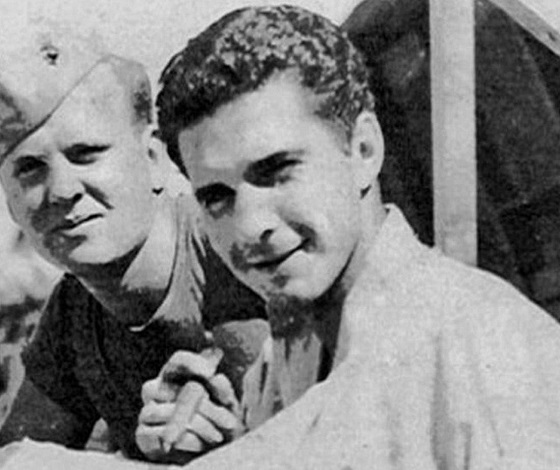Opinion
Bank of Canada’s Band-Aid on a Bullet Wound

This article is from The Opposition With Dan Knight substack. |
|
The Hidden Tax of Trudeau’s Policies: Why Canadians Can’t Afford to Ignore the Real Culprits Behind Inflation and Economic Woes
Good morning, Canada. If you paid attention to yesterday’s announcement from the Bank of Canada, you’ll know they maintained their policy rate at 5% while continuing their quantitative tightening. But what you may not realize is how this is really just putting a band-aid on a bullet wound—a wound inflicted largely by the policies of our Prime Minister, Justin Trudeau.
Firstly, let’s talk about inflation. This is not just an abstract concept or economic jargon; it’s a tax—a silent, insidious tax that drains your income, reduces your purchasing power, and makes your life more expensive. The Bank of Canada admits that inflationary pressures remain broad-based, and that’s no surprise when Trudeau’s administration is running up deficits in the billions. His fiscal irresponsibility is supercharging inflation, and it’s Canadians like you and me who are paying the price.
But Trudeau’s policies don’t just stop at fiscal mismanagement; they’re also significantly impacting the housing market. Trudeau’s indiscriminate approach to immigration is driving up demand for housing, while doing little to increase supply. What we end up with are skyrocketing home prices, which are pushing the dream of homeownership further away for everyday Canadians. The recent economic data confirms this grim reality; the Canadian economy contracted at an annualized rate of 0.2%, yet housing prices are inflated beyond reason.
Now let’s talk about the carbon tax. This is a policy that has done nothing but raise the cost of living for Canadians across the board. Whether you’re filling up your car, heating your home, or buying groceries, Trudeau’s carbon tax makes everything more expensive. Even the Bank of Canada’s report highlights the impact of recent increases in gasoline prices on consumer price inflation. It’s absurdly hypocritical that while Trudeau preaches about justice and equality, he’s willing to burden Canadians with policies that make life unaffordable for many.
So, when the Bank of Canada says it’s holding its policy rate steady at 5% and continuing to normalize its balance sheet, don’t be fooled. These are not solutions; they’re temporary measures that might alleviate some of the symptoms but do nothing to treat the cause. Trudeau’s reckless deficit spending, his flawed immigration policy, and his ideologically driven carbon tax are the real driving factors behind our nation’s financial malaise. And no amount of “quantitative tightening” by the Bank can remedy the damage done by these policies.
In the end, it’s accountability that we need. While the Bank of Canada may be committed to restoring price stability, let’s not forget that the root cause of our economic instability lies squarely with Trudeau’s leadership. His financial recklessness is making life increasingly difficult for average Canadians, inflating everything from the cost of a loaf of bread to mortgage payments. The time for a course correction is now, and it starts by acknowledging the true source of our problems. This is the story you won’t hear in the mainstream media, but it’s one that all Canadians need to understand. This is Dan Knight, signing off from Vancouver. Stay vigilant, Canada.
#cdnpoli
Invite your friends and earn rewards
Click here to see more from The Opposition with Dan Knight.
For the full experience, upgrade your subscription.
armed forces
Recounting the amazing heroics of the ‘Pied Piper’ of Saipan

He had learned Japanese on the streets of East LA where he shined shoes as a street-smart kid
It was the summer of 1944, and World War II’s Pacific campaign reached a turning point on the Japanese-occupied island of Saipan.
Soldiers and civilians alike fought to the death to defend it, since U.S. victory there would crack Japan’s outer defences and place American bombers within striking distance of Tokyo.
Fighting became especially brutal and prolonged around Mount Tapotchau, Saipan’s highest peak, and Marines gave battle sites in the area names such as “Death Valley” and “Purple Heart Ridge.”
Desperate Japanese soldiers, trapped with their backs to the sea, had charged into U.S. lines just before dawn, on July 7, 1944.
It would be World War II’s largest Japanese banzai suicide attack, and the bloodiest.
Savage hand-to-hand combat capped three weeks of the crucial, bloody Battle of Saipan that ultimately killed about 5,000 Americans and 23,000 Japanese troops.
Banzai attacks were frantic mass infantry charges, human waves intended to overwhelm an enemy. Often used a last-ditch tactic, they usually resulted in devastating losses.
Nearly all of the 4,000-plus Japanese soldiers in the final suicide charge that day died.
Soon after the 2nd Marine Division and U.S. Army forces landed on Saipan in mid-June 1944, Gabaldon began sneaking into enemy territory at night, mostly alone, to find caves and buildings where the Japanese were hiding.
He caught guards by surprise, shot them if necessary or forced them out with smoke bombs. If that didn’t work, he threatened those inside with flamethrowers he didn’t have. He sometimes held a guard at gunpoint while telling another in Japanese to get those inside to come out to just talk.
He had learned Japanese on the streets of East Los Angeles where he shined shoes as a street-smart kid. He moved in with two friends, first-generation Japanese American brothers, and learned the language and culture from their family.
Shortly after the family was forced into a Japanese American internment camp, Gabaldon, just 17, joined the Marines. Knowing Japanese helped get him in.
The first time Gabaldon sneaked out past enemy lines, he returned with two prisoners. Threatened with court-martial and chastised for acting like a prima donna, he still went on the hunt the next night and returned with 52 more.
Seeing that he was getting results, his commanding officers gave their blessing to their “lone wolf” to keep it up.
Once he started the late-night hunts, Gabaldon said, he could not let up. Taking more prisoners than any American in any war became his “driving ambition,” he wrote in his book, hoping to surpass World War I hero Alvin York, who had captured 132.
Many of them were armed, leaving Gabaldon in a dicey spot at times.
“It was either convincing them that I was a good guy, or I would be a dead Marine within a few minutes,” he said.
He promised the desperate and wounded soldiers and civilians food, water and medical care. America’s top military brass, he told them, did not want to kill or hurt them—and would return them to Japan after the war.
He chatted to his prisoners about their families and hometowns. (His nickname among other Marines? “Gabby.”)
He told them about having lived with a Japanese American family whom he loved. He shared his American cigarettes. Within an hour, 50 or so more came over the crest of the cliffs. Hundreds more followed.
After shocked Marines saw the white skivvy flag, they sent reinforcements to help corral all the prisoners and bring them back to base.
All told, he single-handedly convinced some 800 enemy combatants, instilled with the code of “death before surrender,” to emerge from hiding and give themselves up.
Earning him the nickname “the Pied Piper of Saipan.”
All the more amazing, because of the Japanese military’s strict Bushido code that made soldiers honour-bound to show unwavering loyalty to their nation and their emperor by taking their own lives rather than to surrendering to a wartime enemy.
One of Japan’s commanding generals on Saipan, Yoshitsugu Saitō, committed ritual suicide in a cave not long after the failed banzai attack. Many combatants threw themselves — as well as local Japanese civilians — off a steep cliff.
“Thank God I got 1,000 of them out alive,” he said in an interview with the University of Texas Voces Oral History Center.
When Gabaldon was awarded the Navy Cross in 1960, the Navy and Marine Corps’ second-highest honor, Secretary of the Navy William B. Franke cited his “extreme courage and initiative” in entering enemy caves, buildings and pillbox guard posts amidst hostile fire to capture “well over 1,000” troops and civilians.
His exploits, the secretary wrote, contributed to America’s success and “a definite humane treatment of civilian prisoners was assured.”
Gabaldon’s military days ended when bullets hit his right arm in an ambush back on Saipan in 1945.
In 1960, his exploits on Saipan hit movie screens in Hollywood’s Hell to Eternity, an embellished script with 6-foot-tall blue-eyed Jeffrey Hunter playing the 5-foot-4 Mexican American from East L.A.
— with files from History.com
THE MAKICHUK REPORT is free today. But if you enjoyed this post, you can tell THE MAKICHUK REPORT that their writing is valuable by pledging a future subscription.
You won’t be charged unless they enable payments.
Opinion
The Germans called her the ‘White Mouse’ for her elusiveness

The female SOE operative who killed Nazis, with her own hands
“I have only one thing to say: I killed a lot of Germans, and I am only sorry I didn’t kill more. [on her wartime exploits] Freedom is the only thing worth living for.”
— SOE agent Nancy Wake
Australian beauty Nancy Wake, married a French millionaire and adroitly played the part of a society lady, but comes across as having been more comfortable shooting Nazis and blowing up trains and bridges than trading bon mots at cocktail parties.
If ever there was a female James Bond, Wake is the real deal.
Born in New Zealand in 1912 and raised in Australia, Nancy ran away at sixteen to chase adventure, first as a nurse, later as a journalist. In Paris, she saw fascism rise and vowed to resist it at any cost.
Her career as a spy began when she enlisted as a courier for the nascent French Resistance in Marseille in 1940.
As the wife of a powerful Frenchman, Wake was able to travel with a freedom that not many were granted following France’s surrender to Germany in 1940.
She began trekking through the Pyrenees as a human courier for the resistance movement in France often transporting food and messages to underground fighters.
Soon, however, she began to aid the escape of evaders and allied soldiers into Spain.
Over the months, her stature in the underground network grew, and her role evolved from courier to organizer. She engineered several diabolically clever and daring escapes from both French and Nazi prisons.
Word would spread throughout the German Gestapo of a mysterious dark-haired woman operating the southern escape.
She was known to the Maquis as “Madame Andrée,” but the Gestapo came to call her “the White Mouse” because she kept eluding their traps. She would adopt the moniker as the title of her autobiography four decades later.
Ultimately, Wake was responsible at least in part for moving more than a thousand downed Allied pilots, Jewish fugitives, hunted partisans, and other refugees to safety across the border in Spain.
She was tough — during a raid on a German arms factory, Wake killed a sentry with a judo-chop to the neck. — prickly, profane, disdainful of fools, and at times very, very funny.
She later said, “They’d taught this judo-chop stuff with the flat of the hand at SOE, and I practiced away at it. But this was the only time I used it — whack — and it killed him all right.”
She was also a hard drinker who could (and did) drink the partisans she led under the table. An SOE officer she worked with in France said, “I had never seen anyone drink like that ever, and I don’t think the Maquis had either. . . In my long life, it remains one of the most extraordinary things I have seen.”
She would eventually be apprehended in 1942 and spent four days being interrogated. But the Germans didn’t realize they had caught the White Mouse.
Albert Guérisse, a Belgian doctor and Resistance member (Code name O’Leary) told the German officer she was his mistress, the Germans believed him and set her free.
O’Leary would be tortured to make him reveal the names, duties and whereabouts of the other members of the line. He was put in a refrigerator for several hours and then beaten continuously but did not disclose any information of use to the Germans.
He was then held under the Nazis’ infamous Nacht und Nebel procedure in a series of concentration camps, beginning at Natzweiler and ending at Dachau.
He was again tortured at Dachau and sentenced to death. Fortunately the war ended before the sentence was carried out. Even the SS had failed to break his irrepressible spirit.
In 1943, Nancy’s husband Henri was captured and executed by the Germans. This tragedy only strengthened Nancy’s resolve.
When Wake’s Marseille-based network was betrayed by a Gestapo spy, she fled to Spain herself — on the seventh attempt, and only after six months of trying — and subsequently by ship on to England.
There, she attempted in vain to join General Charles de Gaulle‘s Free French. When the French declined to allow her into their ranks, she connected with Britain’s new Special Operations Executive (SOE).
Following months of intensive training to prepare her for combat, Wake parachuted into the mountains of central France in the belly of a Liberator bomber to equip and lead a force of Maquis partisans that grew to thousands as the Allied invasion of Normandy grew near.
“I was hardly Hollywood’s idea of a glamorous spy.
“Over civilian clothes, silk-stockinged and high-heeled, I wore overalls, carried revolvers in the pockets, and topped the lot with a bulky camel-haired coat, webbing harness, parachute and tin hat.
“Even more incongruous was the matronly handbag, full of cash and secret instructions for D-day. My ankles were bandaged for support when I hit the ground.
“But I’d spent years in France working as an escape courier. I’d walked out across the Pyrenees and joined the Special Operations Executive in England, and I was desperate to return to France and continue working against Hitler.
“Neither airsickness nor looking like a clumsily wrapped parcel was going to deter me…”
Upon a less than graceful landing, Nancy released herself from her parachute that was tangled in a tree.
Quickly, stripping her overalls she hid in a near-by bush until she heard a friendly voice from the distance.
She arrived as he, along with a good-looking young Frenchman named Henri Tardivat were removing her parachute from the branches of the tree.
Gallantly and in a manner typical of the French, Nancy recalls Tardivat commenting, “I hope all trees in France bear such beautiful fruit this year.”
In 1944, in a final effort to break up the French Marquis, 20,000 Germans descended on Nancy’s 7,000 fighters. In the confusion, her radio operator buried his wireless set and codes to ensure they remained out of the wrong hands.
Out of desperation to communicate with England, Wake began what she described as “that bike ride of mine.”
Setting off North, Wake rode through enemy occupied territory passing numerous German checkpoints. Women according to Wake, have a unique power in times of combat. She once explained her reasoning:
“I don’t see why we women should just wave our men a proud goodbye and then knit them balaclavas. A woman could get out of a lot of trouble that a man could not.”
She reached her destination and organized with England where the next airdrop of ammunition, food and supplies would be and ensured a replacement radio and codes were included. Riding day-and-night, Wake rode 500 kilometres in just 71 and half hours.
Soon after the completion of her marathon bike ride, Nancy re-connected with the Frenchman she met when she parachuted back into France. Tardivat suggested that if Nancy desired ‘a bit of fun’ she should join his attack on the Gestapo headquarters in Montucon.
“The most exciting sortie I ever made. I entered the building by the back door, raced up the stairs, opened the first door along the passageway, threw in my grenades and ran like hell.”
After the war, Nancy received numerous awards and accolades for her bravery and service. She was awarded the George Medal, the Croix de Guerre, and the Légion d’honneur, among many others. However, despite her achievements, Nancy remained modest and down-to-earth, never seeking the spotlight.
Wake died on 7 August 2011, aged 98, at Kingston Hospital after being admitted with a chest infection. She had requested that her ashes be scattered at Montluçon in central France.
— with files from Mal Warwick & Chloe Curran
THE MAKICHUK REPORT is free today.
But if you enjoyed this post, you can tell THE MAKICHUK REPORT that their writing is valuable by pledging a future subscription.
You won’t be charged unless they enable payments.
-

 armed forces20 hours ago
armed forces20 hours agoIt’s time for Canada to remember, the heroes of Kapyong
-

 International2 days ago
International2 days agoBBC uses ‘neutrality’ excuse to rebuke newscaster who objected to gender ideology
-

 Agriculture2 days ago
Agriculture2 days agoThe Canadian Food Inspection Agency’s Bloodlust: Worshipping Policies While Ignoring Science
-

 Agriculture2 days ago
Agriculture2 days agoThe Canadian Food Inspection Agency’s Bloodlust for Ostriches: Part 2
-

 Agriculture2 days ago
Agriculture2 days agoWas The Ostrich “Cull” A Criminal Act?
-

 International1 day ago
International1 day agoBBC boss quits amid scandal over edited Trump footage
-

 Housing1 day ago
Housing1 day agoTrump advancing 50-year mortgage to help more Americans buy homes
-

 Frontier Centre for Public Policy2 days ago
Frontier Centre for Public Policy2 days agoNotwithstanding Clause Is Democracy’s Last Line Of Defence















